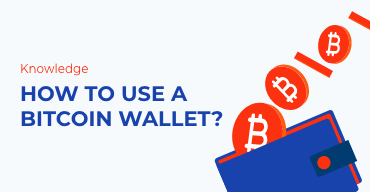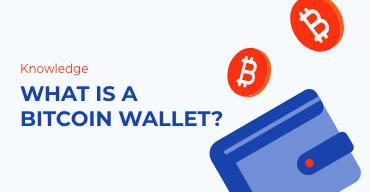The answer to what is Ethereum as a concept, technology, and revolutionary invention is inevitably related to the matter of its predecessor, Bitcoin. Ethereum is essentially an open-source software platform built to process code and conduct all kinds of transactions. In comparison to Bitcoin’s restrictive approach, which solely deals with the cryptocurrency Bitcoin, Ethereum goes further to enable the creation of more than just a cash system.
Some knowledge in Bitcoin may prepare you for Ethereum, which is a kind of an extended version of the former. However, it takes a lot more than an Ethereum Wiki article to gain significant insight into the constituents of the system: Ether, decentralized apps and organizations, and the network as a whole.
History of Ethereum
Historically speaking, the creation of Ethereum naturally needed to occur some time after Bitcoin was first released. Satoshi Nakamoto first made his revolutionary creation public back in 2009 and released the computer code behind the fundamental Bitcoin technology a couple years later. Its wider potential is what prompted people’s curiosity in various directions, with one ultimately inventing Ethereum.
The Ethereum founder, Vitalik Buterin, was in fact a long-time editor for a Bitcoin-dedicated publication. This Russian-Canadian adolescent worked with his father on developing an understanding regarding the underlying technology, and consequently saw ways to build on it, alter it, and finally expand it so as to perform its projected operations.
He released the white paper for Ethereum in 2013, believing that it would come up against massive criticism due to flaws and inconsistencies. On the contrary, the founding technology—the Ethereum blockchain—received massive global support and ultimately drew top tech developers to its primary team lines.
The Ethereum network actually went live the following year, in 2014, under the charge of Vitalik Buterin, alongside his newest associates, Mihail Alisie, Anthony Di Iorio, Charles Hoskinson, Gavin Wood, and Joe Lubin. They were the first to go up on the platform as it went live, and in order to practically illustrate their invention, they held an auction of its inherent token, Ether, a few months after the public release.
How Does Ethereum Work?
As indicated so far, the operations conducted by Ethereum can only be understood by a prior knowledge of Bitcoin to a certain degree. Due to this, explaining Ethereum’s basic operations starts with Bitcoin.
This “electronic cash system,” as it was originally dubbed, aimed to undermine the centralized world of finance—payment processing, currency exchange rates and platforms, and money management and storing. For the purposes of this Bitcoin system, Nakamoto developed a decentralized technology, consisting of pieces and scraps of already existing things—P2P tech, encryption, security and payment processing.
A Blockchain Powered by Ether
The Ethereum blockchain, in turn, is fundamentally the same as the Bitcoin blockchain—it consists of the same combination of capabilities and still features the primary characteristics of decentralization, anonymity, and security. The core difference is in the extended potential of the Ethereum network as opposed to the Bitcoin blockchain.
The former had been developed for the purpose of the Bitcoin system, not the other way around. Hence, when it came to Ethereum, its basis and its use, developers were free to invent more than just Ethereum wallet apps and went on to code all kinds of applications onto the platform.
This is enabled by the unique coding language of this decentralized blockchain platform. Known as Solidity, developers are encouraged to code their software ideas onto this platform, which is currently in the second out of its four stages: Frontier, Homestead, Metropolis, and Serenity.
Decentralized Apps
The apps running on the Ethereum platform are known dApps—decentralized applications—and function much the same as any other software solution. Immutability—an inherent feature when discussing what is Ethereum—has naturally transferred onto the apps running on it.
Once verified by the network of computers, also known as nodes, no individual participant can alter the block created by this latest transaction of code (the app’s code). A change is solely possible via full authorization of all nodes, which is a practically impossible feat.
Of course, this isn’t to say that e-wallets don’t serve their purpose. In fact, these types of cryptocurrency storage and transaction solutions were further needed for Ethereum’s token, Ether, paid for the purposes of the following concept of “smart contracts.”
What Is a Smart Contract?
A “smart contract” is just like any other contract, only written in code. It determines the basic nature of the operations on the Ethereum platform conducted by individual apps. Regardless of whether the app is related to the financial, business, or real estate industries, a key factor in the apps’ functioning is contained in the smart contract.
Just like any other contract, these are specifically consistent with an “if-then” structure. It denotes the presence of preconditions, expressed with the “if” clauses, as well as their resultative consequences, expressed through the “then” clauses.
The Ethereum smart contract concept practically allows the apps to perform the function by explicitly following the “letter of the law, the code.” This is due to the fact that the platform’s blockchain is Turing complete, meaning it has a wider and optimal understanding, unlike the Bitcoin blockchain. Bitcoin, being Turing incomplete, can process only a limited range of contracts—the ones regarding currency transaction processes.
Either way, smart contracts allow users to eliminate the middleman and implement decentralization in new spheres of everyday life. All it takes is to perfect them in their “intelligence,” as they often need to take real-life, outstanding circumstances into account (aside from the literal reading of the code).
How to Get Ethereum
Any one individual owning a computer with enough processing power can hold the entire Ethereum platform on their device. Any such participant (i.e, node), can code an application of their choosing and release it for verification. But this feature raises other concerns as we answer What is Ethereum?
Such unconditional freedom would open the gateway for numerous unconscientious developers, ill-minded scammers, and the likes, releasing all kinds of software. This software can end up getting verified, remaining immutable on the blockchain despite its malfunctions. Another scenario would see it get rejected but still take significant processing and verification power that could have been otherwise used.
Developers nowadays are often looking to buy Ethereum fuel (Ether). This is the main security against these malicious-app scenarios, as developers are required to pay, in a way, to have their app checked and verified, and ultimately stored, on the blockchain. The Ether payment goes to the miners discussed below, and developers are able to obtain it in a variety of ways, much like one can with the leading cryptocurrency, Bitcoin.
Aside from purchasing it through the different kinds of platforms illustrated here, Ether can also be accumulated via Ethereum mining, a process much like Bitcoin mining. It actually consists of verifications of individual lines of code, instead of the single Bitcoin-code type on the Bitcoin blockchain, during which Ethereum miners solve mathematical problems to store new apps on the subsequent blocks.
For less tech-savvy Ethereum nodes, such valuables are available through exchange platforms. Developers can seek to purchase it directly, using a fiat or another cryptocurrency, or simply exchange it for a good or service and get paid in Ether.
“Ethereum for Dummies” publications have managed to simplify explanations on the platform as much as possible. Still, they all generally keep to the initial fuel analogy used to describe the true meaning and importance of Ether for Ethereum developers. Thus, once an app is released onto Ethereum’s network, it requires a specific degree of processing, computing power, and time, consequently, to get verified. Therefore, developers are practically fuelling the network of nodes with enough Ether to verify each specific app—an amount normally determined by the app’s gas requirements.
What Is the Use of Ethereum?
The main use of the Ethereum platform and its revolutionary, massively potent blockchain technology, is to decentralize all kinds of aspects of everyday life. This is done through the apps and organizations that have sprung up on the platform since its earliest beginnings.
dApps
One use of Ethereum is to create apps and programs that would take the middleman out of the picture. Thus, people would be able to transact with money directly from the sender to the receiver, especially due to Ethereum’s specific ability to perform such payments in a variety of currencies.
Moreover, nodes can get a service done by a specific party by placing a request and having the other accept it, with the “smart contract” between them dictating the payment for the service, which will be executed as soon as conditions on both ends have been met.
These dApps nowadays differ in a range of different fields, and while some are still in their beta phase, others are completely available with all their functionalities. They include Golem, Gnosis, EtherTweet, Weifund, Provenance, Etheria, and Alice, among others.
DAOs
The Ethereum blockchain further supports the development of DAOs—decentralized autonomous organizations—as well as their subsequent use through its functionalities. This type of organization allows all kinds of communities and workgroups to operate via Ethereum—storing, sharing, and using information straight from there for maximum convenience.
One such organization, The DAO, is responsible for the bad reputation preceding others of its kind. The DAO collected investments by people, made public trades, and returned investment payments to their investors in Ethereum coin currency or any other fiat or digital one coded on the platform. Nevertheless, one node in the system made use of a specific feature of this operative protocol and managed to drain over $150 million–worth of investment.
This actually culminated in a major turning point for Ethereum, as such malpractice was condemned by the general public, and practically the entire network agreed to reverse the outflow of funds from The DAO.
This resulted in the appearance of ETH on the one hand, adopted by such supporters, as well as Ethereum Classic, adopted by the few who promoted the platform’s original invention. Regardless of such a split outcome, it became evident that following the codes “to the letter” is one operative aspect that needs change and improvement.
Ethereum vs Bitcoin
In a duel of the two globally leading cryptocurrencies, it’s essential to pinpoint the differences between the two in order to choose the winner. While there are many aspects to be discussed, the matter of their Turing nature is one that has already been mentioned above, but it deserves equal attention when it comes to Bitcoin.
In this regard, the Bitcoin blockchain is a Turing incomplete platform, contrary to Ethereum, meaning that there is only a limited number of operations the blockchain can understand, calculate, and carry out.
What Is the Difference Between Bitcoin and Ethereum?
While one difference is in their core computational powers, which are practically inherent, there are other differences between the platforms that more directly indicate contrast. For one, Bitcoin has a set cap of how many instances of the cryptocurrency can ever exist: 21 million. On the other side of things, Ethereum and its Ether token and cryptocurrency are unlimited, although a recent estimate has shown it to be moving towards a stabilizing price.
Aside from the actual Ethereum cryptocurrency, the two platforms differ in their mining, i.e, verification time, and their necessary computing power. After all, Bitcoin’s lengthier existence has taken a toll on its speed, with transactions taking up to 10 minutes and requiring entire mining farms, while Ethereum operations take no longer than a dozen seconds.
Plus, the verification of all kinds of code transactions is still performed by proof-of-work, with efforts to switch towards proof-of stake. Until such novelties have been implemented, the current state allows for Ethereum mining with the sole computing power of individual nodes.
The Future of Ethereum
Because the Ethereum platform was built upon the model of the Bitcoin blockchain, it is only expected that it should flourish alongside the leading cryptocurrency. With a much wider potential for use, Ethereum is bound to enjoy even greater popularity, although users seem much less engaged in the cryptocurrency’s value as they are in the actual platform. Its capabilities have been identified by major players like Microsoft and JP Morgan Chase, who’ve made an effort to make the Ethereum network better understood among the general public.
Still, the ultimate future of Ethereum is bound to come from its founder, who continually describes it as a universal way of decentralization. Plus, it aims to end the myth about the current internet’s features—Ethereum’s real decentralization actually shows users just how much the internet is run by small third-party intermediaries.
In terms of the future of Ethereum, the optimistic and optimal projections definitely see it running apps for all imaginable areas, using truly intelligent smart contracts, and bringing the power back into the hands of the “little man,” as Buterin likes to point out.
FAQs
In terms of the overall Ethereum value, how has the technology progressed since its release?
When it comes to value, Ethereum is as volatile as Bitcoin. In fact, due to the inseverable tie between the two, there is little chance that one can change without influencing the other. When the Ethereum platform was first released, its value was no more than a few dollars in fiat currency, but it progressed to a few hundred dollars over the course of its initial years. It plummeted after The DAO hacking incident but has picked up again at a current value of about $200.
Have there been any major practical uses of the smart contract technology?
Not too many major corporations have made the leap toward Ethereum technology, but there are those that pave the way to others. An example is the Spanish bank BBVA, which issued a €75 million loan to Indra, a separate company, using smart contracts. They basically developed their own in-house blockchain, set the terms and consequences of the loan, and once met by both parties, issued the loan funds to the recipient company.
What are investments in Ethereum stock?
Investing in Ethereum is not like your usual stock purchases, where you would buy shares of a particular entity and hold them. Here, investors purchase Ether (ETH), the actual currency of the Ethereum platform and the fuel needed to give each operation on the Ethereum blockchain enough gas (boost) so that it is processed and verified. In this line of thought, investments are best done at online exchange platforms, where you get the added convenience of an accompanying e-wallet to store your newly acquired tokens. All the best exchange sites currently accept Ethereum, so there should be no problem when it comes to trading.
What’s the most suitable option when it comes to Ethereum e-wallets?
This is a small but vital feature in the discussion surrounding the What is Ethereum? question. Considering investors are willing to pay larger sums of money to obtain these Ether tokens, the matter of secure storage is crucial to succeed.
Ether owners can choose from online, web-based e-wallets, which store their cryptocurrency with third-party servers, or downloadable apps and programs that keep it in house, on your own computer or mobile device. Hardware wallets are also an option, along with paper wallets (writing the private key on a piece of paper). Owners are normally advised to practice a combination of one of the former, with the latter, for double precaution.





